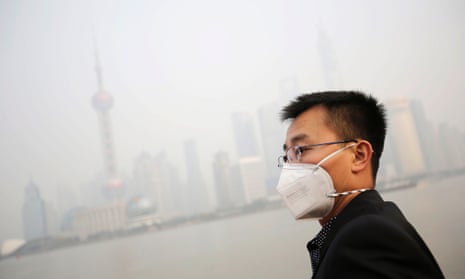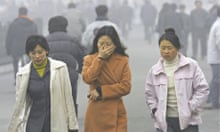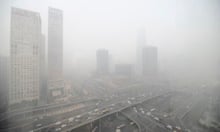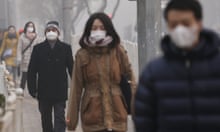Cleaning up China’s air pollution will cost 1.75 trillion yuan (£176b) between 2013 and 2017, a high-ranking environmental official has estimated.
Wang Jinnan, deputy head of the Chinese Academy for Environmental Planning, said that the investment –part of an anti-pollution "action plan" announced by China's cabinet in September – “would drive up GDP by nearly two trillion yuan (£202b) and create over two million jobs,” China’s official newswire Xinhua reported.
The total cost will be higher than the 2012 gross domestic products of most countries, including Finland, Israel and Portugal.
“36.7 percent of the investment, or 640 billion yuan (£64.5b) should go on cleaning up industry, followed by 490 billion yuan (28.2 percent) on cleaner energy sources. Cleaning up motor vehicles will absorb 210 billion yuan,” Xinhua reported, citing Wang.
In 2013, broad swaths of China recorded their highest air pollution levels in 52 years, causing widespread outrage over the massive environmental toll wrought by decades of unchecked economic growth.
While Beijing has long been notorious for its pea-soup air, a number of traditionally clearer cities, including Shanghai and the northeastern metropolis Harbin, have registered pollution levels high enough for local authorities to ground flights, close schools and pull cars from the roads.
On Friday, Shanghai’s concentration of airborne PM 2.5 – particulate matter small enough to lodge deep within the lungs – rose to 214 micrograms per cubic meter, three times China’s national limit. The official Shanghai Environmental Monitoring Center warned children and the elderly to stay indoors.
In its five-year action plan, China's State Council pledged to reduce the level of airborne particulate matter by at least 10% in major cities by 2017.
Yet many smog-related government measures, such as curbing street-side barbecues and certifying pilots to land in low-visibility conditions, have drawn criticism for glossing over the problem. In October, one Beijing official blamed the smog on “the traditional way of cooking Chinese dishes.”
In response, many Chinese people have taken measures into their own hands. Face masks have become a fashion statement; air purifier sales have spiked. An elementary school in north China’s Shijiazhuang, one of the country’s most polluted cities, has begun teaching its students a smog-defying aerobics routine involving acupuncture points associated with respiratory health.
Last week, a hospital in the southwestern Chinese city Chengdu opened a “smog clinic” to treat air pollution-related ailments such as coughs and asthma; it has been treating roughly a dozen patients a day. "We should not fear smog. It's preventable and curable," says a banner hung by its entrance.




Comments (…)
Sign in or create your Guardian account to join the discussion